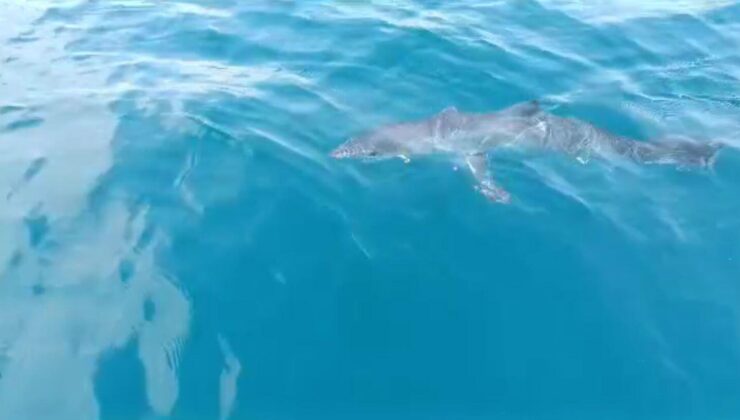Recent Social Media Videos Spark Concerns Over Shark Presence in Turkish Waters
In recent weeks, a surge of videos circulating on various social media platforms has raised public concern about the presence of sharks near popular Turkish holiday destinations, especially in the coastal regions of Antalya and the Aegean Sea. These recordings, often shared by travelers and locals alike, depict sightings of large marine predators close to the shorelines, fueling fears among tourists just as the summer vacation season kicks into full gear.
Locations of Shark Sightings and the Reality Behind the Claims
Specifically, these videos showcase sharks observed off the coasts of Mersin, Antalya, and Marmaris. Experts clarify that while these sightings do occur, the species involved have long been part of Turkey’s marine ecosystem. The common types identified include sand sharks, blue sharks, and mako sharks.
Expert Insights: Are Sharks Naturally Present in Turkish Waters?
Prof. Dr. Deniz Ayas, a distinguished faculty member at Mersin University’s Faculty of Fisheries specializing in Processing Technology, explains that the images circulating are often exaggerated or misunderstood. According to him, the presence of sharks in Turkey’s waters is not a recent phenomenon but has been a natural part of the marine environment for decades.
The Behavior and Habitat of Sharks in Turkey
He emphasizes that sharks are typically found in specific habitats such as river mouths and deep offshore areas, especially during breeding seasons. For instance, sand sharks frequently use the Mediterranean’s river estuaries as breeding and nursery grounds. Importantly, these creatures tend to avoid crowded beaches and tourist zones, making encounters with humans rare.
Addressing the Perception of Threat
Prof. Ayas stresses that the images seen on social media are often distorted by camera angles and the natural tendencies of sharks to approach shallow waters for feeding or breeding during particular times of the year. He describes these species as inherently timid and non-aggressive, posing minimal threat to humans.
Environmental Factors and Their Effect on Shark Behavior
He further notes that climate change and pollution have contributed to shifts in shark behavior, prompting some to venture closer to the coast. Yet, he underscores that these are normal ecological responses and should not be misinterpreted as signs of imminent danger.
Myth Busting: Do Sharks Pose a Threat to Tourists?
Ayas reassures the public that serious shark attacks in Turkish waters are exceedingly rare. The statistical data confirm that incidents involving sharks and humans are virtually nonexistent in the context of Turkish tourism zones. Instead, these sightings should be viewed through a lens of ecological balance and natural shark behavior.
The State of Shark Populations in Turkey
He also highlights a common misconception: many believe shark populations are increasing, but in reality, they are declining. Overfishing, especially by industrial fishermen, has led to a significant reduction in shark numbers over the past 50 years. Many sharks caught are discarded or die before reaching the shore, further impacting their populations.
Conservation and Responsible Fishing
Prof. Ayas calls for increased sensitivity among fishermen and local communities regarding shark conservation. Protecting these species is crucial for maintaining ecological balance, as sharks play a vital role in the health of marine ecosystems.
Conclusion: Understanding and Respecting Marine Life
In summary, while shark sightings in Turkish waters are real, they do not constitute a threat to public safety. Instead, they serve as a reminder of the importance of preserving marine biodiversity. Responsible tourism and fishing practices are essential to ensure the continued coexistence of humans and these remarkable creatures.
This article has been generated, translated, and reviewed with the assistance of artificial intelligence, aiming to provide accurate and comprehensive information about shark presence in Turkey’s waters.
 02:00
02:00




 News
News
 Eğitim
Eğitim
 Genel
Genel
 Genel
Genel
 Genel
Genel
 Genel
Genel
 Genel
Genel







